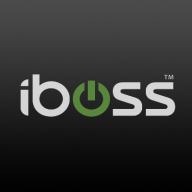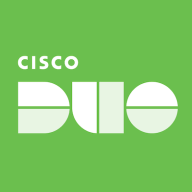


Cisco Duo and JumpCloud compete in the identity management and access control solutions category. JumpCloud appears to hold an edge because of its integration capabilities and feature-rich platform.
Features: Cisco Duo offers multi-factor authentication (MFA) via smartphones and other mechanisms, single-pane-of-glass management, and integration with numerous apps. JumpCloud provides seamless integration across platforms, strong directory management, and single sign-on (SSO) functionality.
Room for Improvement: Cisco Duo should consider eliminating the telephony credits system and enhancing on-premises solution integration. Users also seek better compatibility with enterprise applications. JumpCloud can improve its user interface customization, add more multi-tenant features, and increase external platform integrations.
Ease of Deployment and Customer Service: Cisco Duo supports deployment across public, hybrid, and private clouds, plus on-premises environments. Its customer service is praised but could be quicker. JumpCloud is primarily public cloud-based, with users noting slow technical support response but finding its deployment process simple.
Pricing and ROI: Cisco Duo provides flexible tiered pricing options, offering significant ROI by boosting security and reducing cyber insurance costs. JumpCloud's competitive pricing offers various modular cost options to fit different organizational needs, delivering straightforward ROI through user management efficiencies.



| Company Size | Count |
|---|---|
| Small Business | 6 |
| Midsize Enterprise | 6 |
| Large Enterprise | 5 |
| Company Size | Count |
|---|---|
| Small Business | 27 |
| Midsize Enterprise | 16 |
| Large Enterprise | 36 |
| Company Size | Count |
|---|---|
| Small Business | 13 |
| Midsize Enterprise | 2 |
| Large Enterprise | 3 |
iboss offers a comprehensive security platform designed for diverse use cases such as web filtering, data loss protection, corporate proxy services, and URL filtering.
iboss integrates advanced features to address dynamic security needs, leveraging its strength in SASE, ZTNA, AI initiatives, and cloud integration, while ensuring seamless operations for remote work. It excels in historical forensics, malware protection, and flexible cloud deployments. Users benefit from comprehensive traffic scanning, robust malware detection, and PaaS capabilities that reduce hardware management. An intuitive admin console ensures efficient management with content filtering and low false positives. SSL decryption enhances security, while DLP protects data in AI conversations. Deployment is rapid and scalable, allowing effortless integration with emerging technologies.
What features does iboss offer?
What benefits and ROI should users consider?
iboss finds significant application in sectors such as education, where web filtering for K-12 is crucial, and in corporate environments requiring robust proxy services and URL filtering for network security. Its adaptability is essential in scenarios demanding flexible, decentralized security frameworks, particularly for remote work setups.
Cisco Duo is a cloud-based identity security tool offering easy and wide-ranging access protection for users and devices worldwide. It assures identity-first security with clear visibility across multi-cloud, hybrid, and on-premises environments.
Cisco Duo provides robust multi-factor authentication and seamless integration capabilities with existing infrastructures. Appreciated for its stability and speed, it supports distributed workforces by securing VPN access, corporate networks, and cloud services. Duo’s comprehensive identity ecosystem supports easy deployment and management through a single-pane-of-glass management interface. It seamlessly merges with popular platforms like Active Directory and Office 365 across diverse hardware.
What are Cisco Duo’s Essential Features?
What Benefits and ROI Can Cisco Duo Users Expect?
Cisco Duo finds extensive applications across education, finance, retail, and government sectors by fortifying network and application access security. Organizations leverage it for its MFA capabilities, integrating with ERP systems, ensuring protected connectivity with VPN and cloud-based services, crucial in maintaining secure and efficient operations.
JumpCloud offers efficient device management, single sign-on, and integration capabilities. It integrates seamlessly with Microsoft 365 and Google Workspace, streamlining user management across diverse environments.
JumpCloud delivers device, user, and application management across platforms like Windows, Mac, Linux, and cloud services such as AWS and Azure. Acting as a cloud-based directory, it facilitates single sign-on and identity access management, making it an attractive replacement for Active Directory and LDAP directories. Its policy management and centralized directory simplify user and device administration, offering a user-friendly interface with flexible access control and remote management. Organizations can experience streamlined onboarding and offboarding processes, robust authentication, and scalability. Despite being powerful, room for improvement is noted in alert capabilities, comprehensive MDM for Windows, multi-tenant features, and API reliability.
What are the key features of JumpCloud?Companies across industries utilize JumpCloud for comprehensive management of devices and user identities. It is especially beneficial in technology-driven sectors where centralized directory services replace traditional Active Directory and LDAP models. Organizations employing platforms like AWS and Azure find it essential for maintaining efficient and secure access management.
We monitor all Single Sign-On (SSO) reviews to prevent fraudulent reviews and keep review quality high. We do not post reviews by company employees or direct competitors. We validate each review for authenticity via cross-reference with LinkedIn, and personal follow-up with the reviewer when necessary.